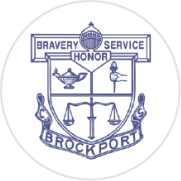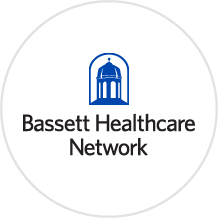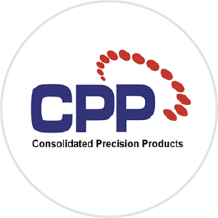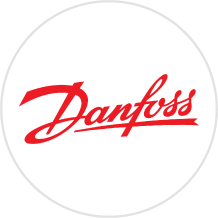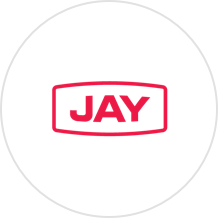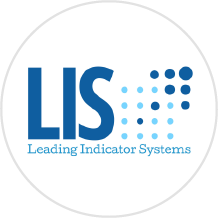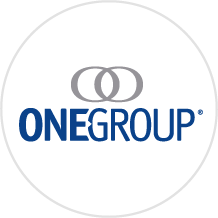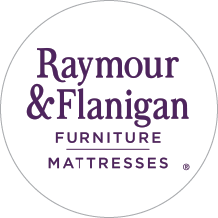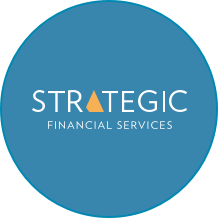 “When people clarify what matters and leverage their strengths, leaders emerge and anything is possible.”
“When people clarify what matters and leverage their strengths, leaders emerge and anything is possible.”
 “When people clarify what matters and leverage their strengths, leaders emerge and anything is possible.”
“When people clarify what matters and leverage their strengths, leaders emerge and anything is possible.”
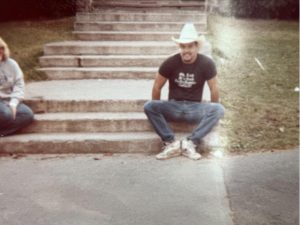
David at Hamilton College
After I got my MBA at RPI, already having spent seven years post-undergrad in business in operations, distribution and an entrepreneurial venture, I went into manufacturing and had some very good opportunities.

Early in my manufacturing career, my family and I faced a reality check by moving to Cincinnati, Ohio when I accepted a role as General Manager (GM) of a division of the company I was in. As GM, I oversaw a sizable manufacturing operation specializing in the production of packaging for McDonald’s, including the corrugated micro flute containers used for the Big Mac and other menu items that used this type of packaging. It was a big lift. McDonald’s never knows how many Big Macs they will sell on any given day, so suppliers like us had to be very service oriented.
This role became my crash course in manufacturing excellence, I like to think of it as a laboratory for a Ph.D. I became facile in the areas that are important in manufacturing and logistics. Thanks to the team’s responsiveness, we turned our division into a very profitable piece of the business.
After four years of growth, the CEO of our company, a third- generation family, made me the first non-family president of the business in its 75-year history. He moved us back to Central New York and, three years later, I got fired.
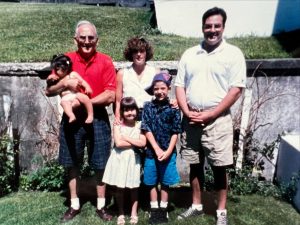
David, his father, and his family outside his childhood home in Little Falls, NY.
Suffice to say the reason was not egregious, it marked a pivotal moment. At age 38, with school-aged kids and a supportive wife, I realized despite financial success and material comfort, I wasn’t fulfilled in a lot of ways.
Enter John Sauer, an Industrial Psychologist out of Berkeley, Calif. who I had connected with along my executive leadership journey. John has since passed but he was instrumental in helping me build the executive team at the company that I was president of by using empirically valid assessments that are part of executive recruiters’ tool kits… these are used to assess intellectual capability, decision-making capability, and executive leadership qualities.
I got to thinking, “maybe I can flip the coin and John could help me by giving some of these assessments, and I could learn about what my strengths are and where I might want to aim my gaze.”At 38 I thought, let’s get this right, because I really feel like in my career, even though I was by some measure successful, I was never really fulfilled or happy, to be honest with you.
So, I called John and explained the situation. John asked me to come out to the Oakland Bay Area, quickly. On that same call, he told me he was dying. I was like, “What do you mean, John?’ And he said, I’m physically near death. He had heart disease that was progressing pretty rapidly and they couldn’t help him.

John Sauer
When you’re in a selfish mindset focused on yourself and your problems, and you hear something like that, it jolts you into the reality of the moment. I said, “John, man, I am sorry. I didn’t know.” He said, “I know you didn’t know and I’m not telling you that because I want your sympathy or because I don’t want to help you. I do want to help you, but I just want to tell you to hurry up!” I said, “I’ll get out there quickly, but also asked, are you serious?”
I went out to California and met with this gift from God for three days. Yes, he gave me these very interesting assessments, but he did something even more interesting. We would sit for a couple of hours, John across from me, and he just asked me questions. He’d say something like, ‘“Tell me about Little Falls. Little Falls seems to be someplace that’s really important.”I responded, “Yeah, Little Falls. That’s where I first met my highschool sweetheart and she’s been a really important part of my life, probably most important.” Then I would explain why, and we’d go deeper into the conversation.
And, John would listen and take notes. Then, at the end of a couple of hours, he’d give me an assessment, and even though worn out, he’d say, “I’ll be back tomorrow, and we’ll talk this through again.”
I took the assessment the next day, and then he asked another compelling question like, “tell me about your dad, he seems to be a person of influence in your life.”
My dad was a World War II vet, second day, Normandy, medic. He never talked about it. And I understand why. You don’t have to watch Saving Private Ryan for too long before you realize the things he experienced. So, I would tell him about my dad and how my dad was all about duty. I also told him he never told me he loved me until he was on his deathbed, and John would continue to listen and take notes.
Then he’d give me another assessment.
At the end of the three days, he said, “I’m going to give you the results of these assessments and you’re going to do just fine.” He shared how these assessments give you a lot of data points that are really helpful. “And I’ll explain to you what they mean and why they’re important to consider as you seek to gain clarity,” he said.

Then he said, “I’m going to give you something even more valuable.” He gave me a checklist of 12 statements and told me that when I have an opportunity that looks to be the important next one, look at the 12 statement list. Check as many of them off as you can if they’re positive based on what you’re trying to do or going to do.
He said, “If you can’t check off nine or more, I would definitely make sure you know what you’re doing and I would probably tell you to turn and walk away.”
This checklist was really amazing and essentially a distillation of our dynamic discussions over the course of three days to really identify and isolate what are the most important aspects of fulfillment for me personally, professionally and aspirationally.
So, what happened next? I returned home and soon after, received an offer by Coyne Textile, a big Syracuse company. It was a good offer as the head of sales where I would earn a couple hundred thousand dollars. I went to the checklist and could only check off three. I talked to my wife after and told her there was good news and bad news. I told her a good opportunity surfaced, but the bad news was I could only check off three. Lori said, You know what you’re doing, you’re not going to take it, right?” The answer was “no.” This same thing happened two more times. Now my wife was getting a bit nervous. But, that’s when I met Neil Goldberg through my network and my clarity of direction. Neil was/is the CEO of Raymour & Flanigan. He was in Young Presidents’ Organization (YPO) with me and was already legendary.
When Neil became CEO, sales were approximately $25 million.
When I met Neil, sales at Raymour & Flanigan were somewhere around $175 million, due to the success of Neil growing it with his brother and cousin. Neil and I had a discussion, and he said to me, “I know of you, and I think you can help fill out our leadership team.” He told me he needed a VP of Human Resources. I recoiled at the term “HR”. Then I explained to Neil I’m a businessman, not a human resource guy.
He retorted, “I’ve got plenty of human resource people, but I need a businessperson to run that side of our business.” At that time, the company employed 2,500 people. When I left in 2010 the company employed close to 5,000.
A businessman leading the HR function of a large, growing business–this was very interesting to me. So, I met with each of his executive team members and learned quickly that they were well-lead and the company was well-run. These people were brilliant, and they were all singing from the same sheet of music.

Plus, they were all very, very likable people. I thought, man, this is really cool. So, I went back to my checklist, and I checked off 11 out of 12, .called John and said, John, I think we’ve got it. And he said, oh, tell me about it. So, I told him about it. And he said, man, I never would have thought of that, then he said, but it sounds like that’s the right track. Good luck! I thanked John, deeply. And I then I recalled told him that I never paid him.
“I’ve got money to pay you, John. I actually came out and you spent three days with me, under duress.” He said, “I don’t want your money. What I want you to do is take this process and help somebody else with it; pay it forward”
Not only did I do that, I’ve paid it forward with many people over the years since, I’d venture to guess dozens, gratis. And, we’ve built these valuable foundations into our leadership development and leadership training programs, along with our coaching practices here at Daneli Partners. Together, we’re developing the leader within you.
Daneli Partners has taken these principles to educate business leaders, for-profit and not-for-profit organizations, schools including students, faculty and administration. We are giving them the gift of clarity, prompting them to take that clarity and run with it.
When there is clarity, you will be successful in using the networking model to explore new opportunities. This is where meeting people in organizations that resonate with your soul and your blessings, releases the energy that is so critical and fundamental to fulfillment, cultural optimization, and forward progress. The method John Sauer taught me is a secret formula to win-win-win success.
When you find clarity it creates self-efficacy. Self-efficacy is when that clarity is so strong, and you understand what is so important, letting nothing stand in your way. Learn more about the process of clarity and self-efficacy here: https://danelipartners.com/home/what-matters/. For example, “I’m going to do this, and I know there’s going to be hurdles and there’s going to be people that say, what are you crazy or whatever it might be?” But self-efficacy brings a new level of perseverance and fortitude.
As I have navigated my career, I have found self-efficacy, which led me to start my own companies: Daneli Partners which provides leadership development and training programs and Rock City Development, an enterprise consisting of 10 operating businesses that are all contributing to the advancement of Little Falls, Central New York, and eventually across the country and maybe even the world.
This is really the energizing legacy building piece of my remaining professional life that is part of the revelation from this process. I thank God often for John Sauer’s gift.
And, interestingly, if I hadn’t been fired none of this would’ve happened.
Send us a message using the form below, or email us at [email protected], or call 315-508-4370




